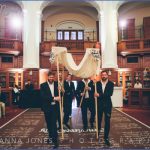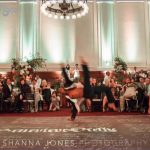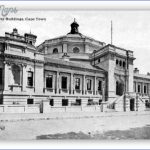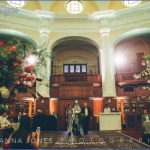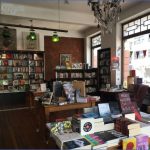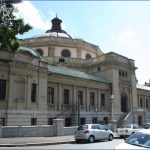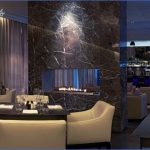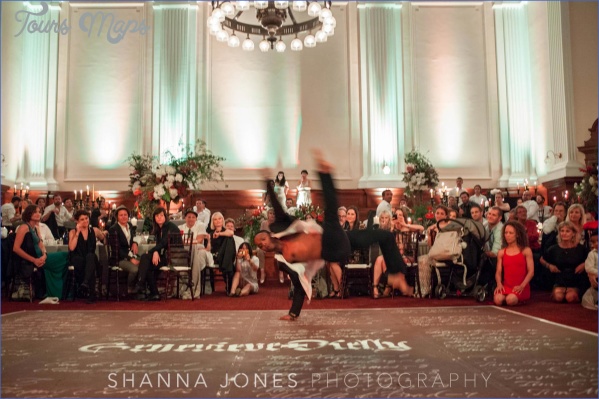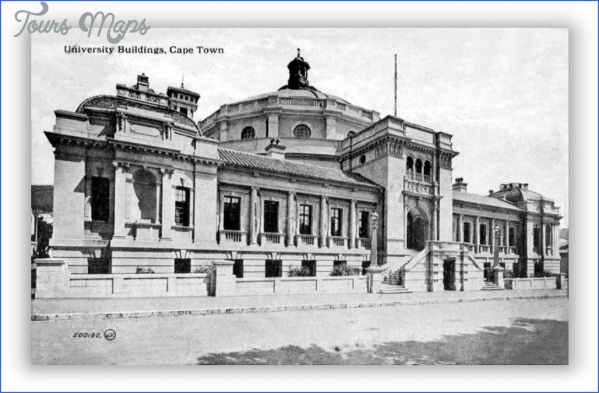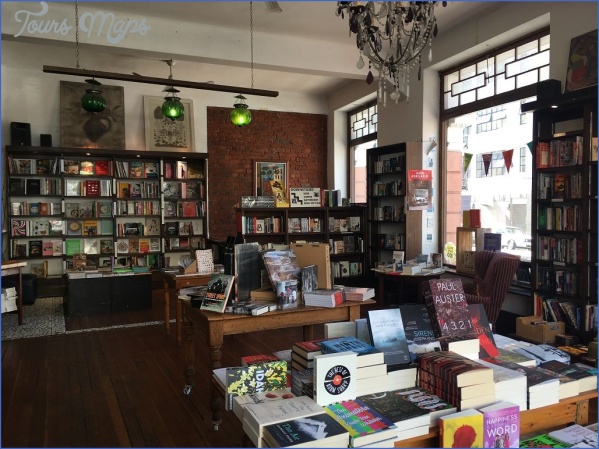The soft sandstone of the upper reaches of the building was the perfect material to support fairly elaborate and often intricate carved decoration. This loggia is above the main entrance, and the exuberance of its detail owes something, however remote, to the decorated sandstone buildings of Lecce in southern Italy.
The auhefaugust Centre for the Book, a veteran of Queen Victoria Street, made its movie debut in 2006. There’s a scene in the last few moments of Blood Diamond, which stars Leonardo di Caprio and Jennifer Connelly, in which Djimon Hounsou, who plays Solomon, is seen preparing to tell everything he knows about the illicit trade in, and his experiences of, blood diamonds. The setting is a conference in a handsome stone building, pretending to be in Kimberley. In fact, the setting is the Centre for the Book and perhaps, in all its history, it hasn’t seemed more alive – particularly when Solomon’s entrance to the auditorium is met with a standing ovation as the film ends.
CENTRE FOR THE BOOK Queen Victoria Street Cape Town Photo Gallery
An exceptional Edwardian building, its copper-coated dome topped by a cupola in teak, the Centre for the Book has had a gloomy life, one that began in 1906, when it was officially opened by Sir Walter Hely-Hutchinson as the senate house for the University of the Cape of Good Hope (the forerunner of the University of South Africa). The senate spent most of its early life as an examining agency for Oxford and Cambridge universities – the University was the incubator from which most other South African universities are descended. Designed by Hawke & McKinlay, the problem was that ‘the new building lacked quickening academic life to stir its gloomy depths, and through its hollow corridors echoed the footfalls of solitary script-laden examiners, symbolic of its academic emptiness’. A white elephant in other words. It was built before there was a ‘real’ university, which, said The Cape Times in May 1910, was ‘like building a town hall where there is neither town nor resident citizens’. It offered examinations but not tuition, and it had the power to confer degrees on successful examination candidates. Olive Schreiner was honoured here in 1913.
Times have changed. While a chunk of the 20th century saw the building being used as the Cape Archives – during which time it fell into disrepair – since the late 1990s, it has come into its own and is now buzzing with activity. ‘The Centre for the Book,’ says Mandla Matyumza, its executive head, ‘is unique in South Africa. It operates under the ambit of the National Library of South Africa, but it is not a library. It’s a specialist outreach unit of the National Library and it was modelled on one attached to the Library of Congress in Washington, DC – also a Centre for the Book. It’s there to be a catalyst in the promotion of a culture of reading, creative writing and publishing in all local languages and in the provision of easy and free access to books for all South Africans.’ The idea was conceived just after 1994, when the State Library and the South African Library amalgamated to form the National Library of South Africa. ‘We want to be known for our support in all matters pertaining to books. It isn’t easy: how do you encourage people to love books and to read for fun in a country where books are so expensive and people would prefer to buy a loaf of bread than buy a book? So we publish books and donate them to schools and libraries at the heartland of our market throughout the country. That’s where our future lies.’
The Centre for the Book has come back to life. It’s been restored and it’s open for business.
The Ceremonial Hall is nothing like as lavishly decorated as the original plans show. There were spaces for murals on the walls of the drum and the ceilings, but a lack of funds prevented them ever coming to life. The upper book stacks house collections belonging to the National Library of South Africa, including the Louis Leipoldt Collection, while the lower shelves showcase material published by contemporary South African publishers.
This bronze and marble bas-relief portrait inside the entrance commemorates shipping magnate and owner of the Union-Castle shipping line, Sir Donald Currie (1825-1909), ‘in whose memory £25 000 was given towards the erection of this building by his daughters ’. Opposite, a matching bronze commemorates Willem Hiddingh who, similarly, donated £25 000. Both portraits are by W. Reynolds-Stephens (1912).
The curved East Corridor, more of an ambulatory, is paved with marble and slate and adorned with pink sandstone columns that later users of the building simply painted over.
The building’s main feature is the magnificent Ceremonial Hall, designed in the style of a Greek theatre. The flat wall at the back was to have housed an organ, though this never materialized due to lack of funds. Here the graduation ceremonies once took place.
While the base of the exterior is built of Paarl granite, the upper walls are of soft sandstone ashlar that came from what was then the Orange River Colony. Green faience Spanish tiles cover the roof and the dome is coated with copper and topped by a cupola of teak.
Maybe You Like Them Too
- Sanctuary Makanyane Safari Lodge SOUTH AFRICA
- Ruzizi Tented Lodge Akagera National Park, Rwanda
- Map of BOTSWANA – Mombo Camp BOTSWANA
- One & Only Nyungwe House RWANDA
- South Luangwa National Park Safari

